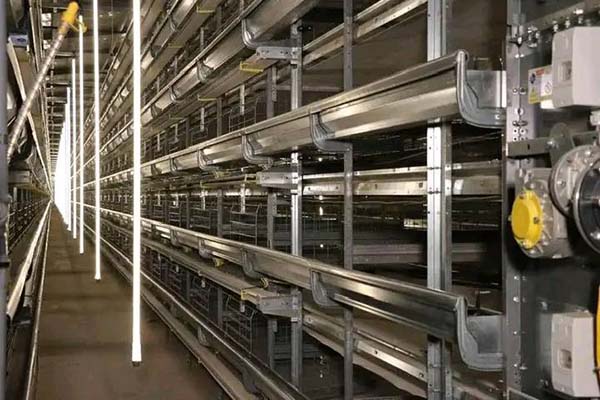How to Set the Lighting Time in Kenya Chicken Farm
Time : 2025-06-29
In the context of modern poultry farming, lighting plays a crucial role in the productivity and health of chickens. Proper lighting can optimize growth, improve feed conversion rates, and enhance egg production. This article focuses on how to set the lighting time in Kenya chicken farms, offering practical insights into achieving optimal results. Let’s delve into this topic with a focus on professional poultry farming equipment knowledge.
—
Introduction to Lighting in Chicken Farms
The lighting system in a chicken farm is an essential part of the farming environment. It provides chickens with a source of light for a regular day-night cycle, which is crucial for their overall well-being. The timing and intensity of the lighting can significantly affect the chickens’ behavior, growth, and productivity.
—
Understanding Kenya’s Climate and its Impact on Lighting
Kenya’s climate is characterized by two seasons: the long rain season and the dry season. The long rain season, which spans from March to June and October to December, can have an impact on the chicken farm’s lighting schedule. It’s essential to understand the local climate when setting the lighting time in a Kenyan chicken farm.
During the long rain season, days are longer, and the natural light can last up to 14 hours. This period requires less artificial lighting. Conversely, during the dry season, days are shorter, and natural light may not suffice for the chickens’ needs. In such cases, additional lighting is necessary to extend the photoperiod.
—
Setting the Photoperiod for Chickens
The photoperiod refers to the duration of light exposure chickens receive each day. It is vital to maintain a consistent photoperiod, as it affects various aspects of chicken health and productivity. Here are the key factors to consider when setting the lighting time in a Kenyan chicken farm:
1. Chick Growth and Development
Newly hatched chicks require a longer photoperiod (up to 23 hours) to promote their growth and development. As they mature, the photoperiod can be gradually reduced to 16-18 hours. Maintaining a consistent photoperiod throughout the growth phase is crucial for optimal development.
2. Egg Production
During the laying period, chickens require a specific photoperiod to maximize egg production. For laying hens, a 14-16 hour photoperiod is ideal. Adjusting the lighting time based on the laying stage can significantly impact egg production.
3. Environmental Considerations
It is essential to consider the environmental conditions of the chicken farm when setting the lighting time. In hot weather, chickens may require more shade and reduced artificial lighting to avoid heat stress. During cold weather, additional lighting can help maintain the chickens’ comfort and productivity.
—
Using Professional Poultry Farming Equipment
Professional poultry farming equipment, such as lighting systems and timers, plays a crucial role in maintaining the correct lighting schedule. Here are some recommendations for setting the lighting time in a Kenyan chicken farm:
1. Lighting Systems
Choose a lighting system that emits the right wavelength of light. White light (530-590 nm) is most suitable for chickens, as it promotes normal development and egg production. Halogen, LED, and fluorescent lighting systems are commonly used in chicken farms.
2. Lighting Timers
Lighting timers allow you to control the photoperiod precisely. These timers can be set to turn on and off at specific times, ensuring consistency in the lighting schedule. Some timers are even programmable, allowing you to make adjustments based on the chickens’ stage of development.
3. Safety and Maintenance
Ensure that the lighting system is safe for the chickens and the environment. Check the wiring and connections regularly to prevent any electrical hazards. Keep the lighting equipment clean and well-maintained to ensure its longevity.
—
Conclusion
Setting the lighting time in a Kenyan chicken farm is an essential aspect of maintaining optimal chicken health and productivity. By considering factors such as the climate, chicken stage of development, and environmental conditions, you can create an ideal lighting schedule for your chickens. Investing in professional poultry farming equipment, such as lighting systems and timers, can further enhance the accuracy and efficiency of your lighting program.
—












